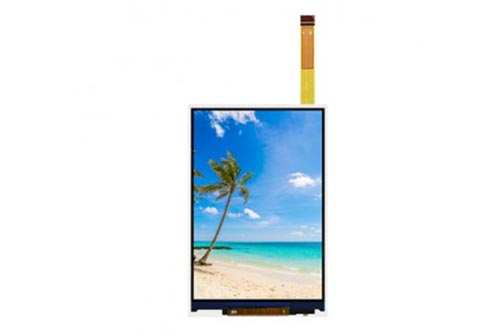How to choose LCD display?
Views: 816 Update date: Mar 21,2024
Choosing an LCD display involves considering several factors to ensure it meets your specific requirements. Here are some steps to guide you through the process:
1. Define Your Requirements: Determine the purpose of the LCD display. Are you using it for gaming, office work, graphic design, or general use? This will influence the features you prioritize.
2. Screen Size: Consider the physical space where you'll place the display and the viewing distance. Common sizes range from 21 inches to 27 inches for desktop monitors, but larger sizes are available for specific needs.
3. Resolution: Higher resolution displays provide sharper images and more screen real estate. Common resolutions include Full HD (1920x1080), Quad HD (2560x1440), and 4K Ultra HD (3840x2160). Choose a resolution based on your usage and budget.
4. Panel Technology: LCD displays typically use one of three panel types:
TN (Twisted Nematic): Offers fast response times and lower cost but poorer color reproduction and viewing angles.
IPS (In-Plane Switching): Provides better color accuracy and wider viewing angles but may have slightly slower response times and higher cost.
6. Response Time: This measures how quickly pixels change from one color to another. Lower response times (measured in milliseconds, ms) result in smoother motion and less ghosting, which is especially important for gaming and fast-paced content.
7. Connectivity: Ensure the display has the necessary ports to connect to your devices, such as HDMI, DisplayPort, VGA, or USB-C.
8. Adjustability and Ergonomics: Look for features like height adjustment, tilt, swivel, and pivot capabilities to customize the viewing angle for comfort and productivity.
9. Color Accuracy and Calibration: If you're doing color-sensitive work like graphic design or photo editing, consider displays with high color accuracy out of the box or those that are easily calibrated.
10. Brand Reputation and Reviews: Research the reputation of different brands and read reviews from both experts and users to gauge reliability, customer service, and overall satisfaction.
11. Budget: Set a budget based on your requirements and prioritize features accordingly. Remember that higher-end features often come with a higher price tag.
By considering these factors, you can choose an LCD display that best suits your needs and provides an optimal viewing experience.
1. Define Your Requirements: Determine the purpose of the LCD display. Are you using it for gaming, office work, graphic design, or general use? This will influence the features you prioritize.
2. Screen Size: Consider the physical space where you'll place the display and the viewing distance. Common sizes range from 21 inches to 27 inches for desktop monitors, but larger sizes are available for specific needs.
3. Resolution: Higher resolution displays provide sharper images and more screen real estate. Common resolutions include Full HD (1920x1080), Quad HD (2560x1440), and 4K Ultra HD (3840x2160). Choose a resolution based on your usage and budget.
4. Panel Technology: LCD displays typically use one of three panel types:
TN (Twisted Nematic): Offers fast response times and lower cost but poorer color reproduction and viewing angles.
IPS (In-Plane Switching): Provides better color accuracy and wider viewing angles but may have slightly slower response times and higher cost.
VA (Vertical Alignment): Offers good color reproduction, high contrast ratios, and better viewing angles than TN panels, but may have slower response times.
6. Response Time: This measures how quickly pixels change from one color to another. Lower response times (measured in milliseconds, ms) result in smoother motion and less ghosting, which is especially important for gaming and fast-paced content.
7. Connectivity: Ensure the display has the necessary ports to connect to your devices, such as HDMI, DisplayPort, VGA, or USB-C.
8. Adjustability and Ergonomics: Look for features like height adjustment, tilt, swivel, and pivot capabilities to customize the viewing angle for comfort and productivity.
9. Color Accuracy and Calibration: If you're doing color-sensitive work like graphic design or photo editing, consider displays with high color accuracy out of the box or those that are easily calibrated.
10. Brand Reputation and Reviews: Research the reputation of different brands and read reviews from both experts and users to gauge reliability, customer service, and overall satisfaction.
11. Budget: Set a budget based on your requirements and prioritize features accordingly. Remember that higher-end features often come with a higher price tag.
By considering these factors, you can choose an LCD display that best suits your needs and provides an optimal viewing experience.




